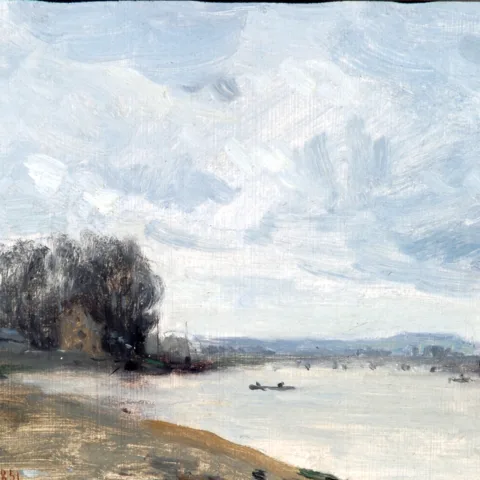The Bowes Museum Blog

Discover the Spanish Collection held by The Bowes Museum

Spanish art held by The Bowes Museum
The Bowes Museum holds one of the largest public collections of Spanish paintings in Britain, including works by renowned artists like El Greco and Goya.
This outstanding Collection includes more than 80 paintings, with representative examples from the Schools of Madrid, Toledo and Seville, among others. However, the School of Madrid is by far the strongest numerically.
In addition to the exceptional amount of artworks, the Collection offers a broad overview on Spanish art, featuring paintings from the 15th century to the 19th century, thus covering a period of about four centuries.
The majority of these paintings were acquired by John and Joséphine Bowes between 1862 and 1863 from the collection of the Countess de Quinto in Paris, through the art dealer Benjamin Gogué. This collection was formed in Spain by the Conde de Quinto after the dissolution of the ecclesiastical institutions – known as Desamortización – carried out by the Government from 1835 to 1837.
Francisco Javier de Quinto y Cortés (1810-1860) was a leading politician, Director of the Museo de la Trinitad in Madrid, and member of the Royal Court. His friendship with the Queen Maria Cristina of the Two Sicilies led to his transfer to Paris, following the Queen in exile, in 1854.
It is not possible to present here in detail the variety, quality and complexity of the Bowes’ Collection. Nevertheless, the following small selection of paintings in the Collection can give a sense of the authentic treasure held in the Museum.
The two notable panels depicted by Juan de Borgoña (c. 1470–1536) represent the ‘Fathers’ of the Church, Saint Jerome and Saint Ambrose, Saint Augustine and Saint Gregory. The glowing colour of the ecclesiastical dresses stands out from the golden background, showing the artist’s notorious skill in depicting costumes. The artist was mainly active in Toledo, apart from a short period he spent in Italy. Trained in the Hispano-Flemish tradition, he became one of the leading painters in the first decades of the 16th century, introducing the Renaissance style in central Spain.

Saint Jerome and Saint Ambrose

Saint Augustine and Saint Gregory
Another remarkable painting is the Still-life with Asparagus, Artichokes, Lemons and Cherries by the little-known artist Blas de Ledesma (active 1604-1614). He had been a pioneer of the still-life genre (bodegón) at the beginning of the 17th century, in Granada. In this painting, the artist demonstrates his ability in rendering the formality of the composition and the geometrical order of the objects, observing them from different perspectives.

Still-life with Asparagus, Artichokes, Lemons and Cherries
Finally, the outstanding portrait of Mariana of Austria, Queen of Spain by Claudio Coello shows the Queen in her widowhood, after the death of her husband Philip IV. The Queen (1634-1696) is depicted by the artist in a natural pose and dressed as a nun, according to the traditional custom in fashion in the Habsburg family. The sobriety of her dress is visibly in contrast with the rich and elegantly decorated curtain behind her. Claudio Coello (1642-1693) was principal royal painter and is considered the last great master of Baroque painting in Madrid.

Mariana of Austria, Queen of Spain
By Bernadette Petti, Assistant Curator of Fine Art







